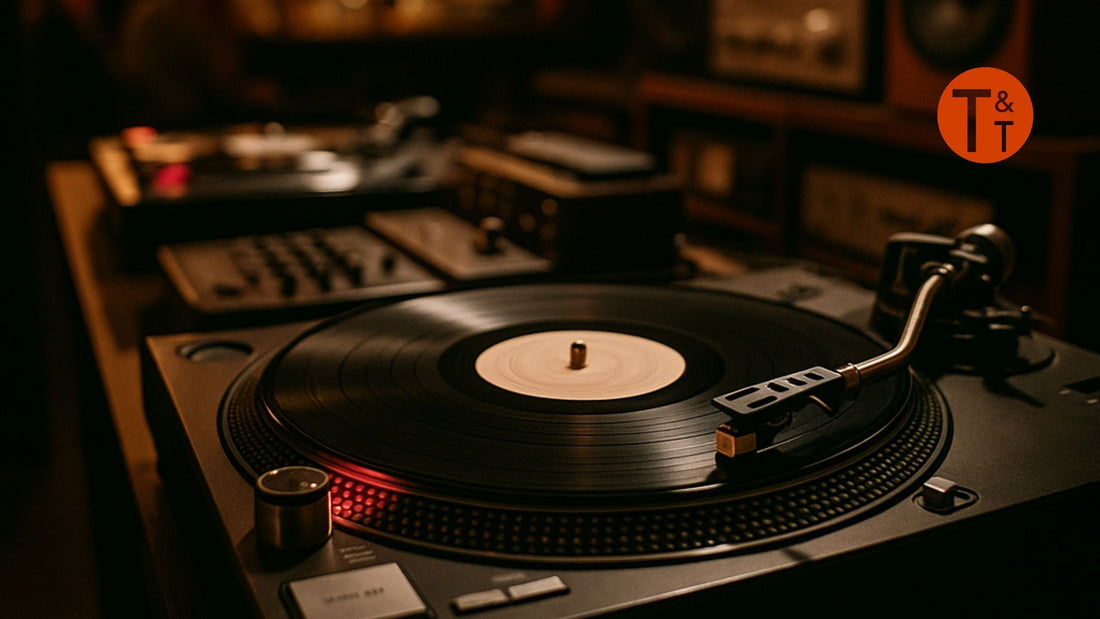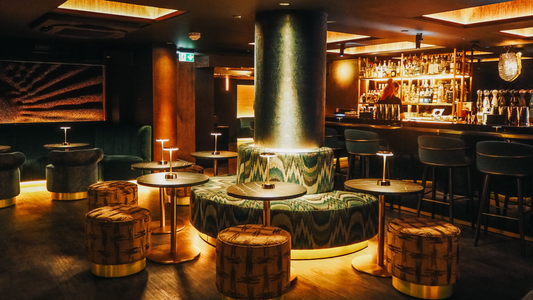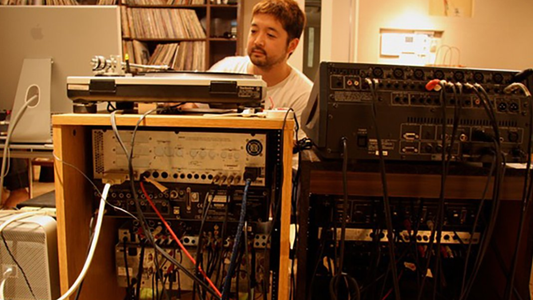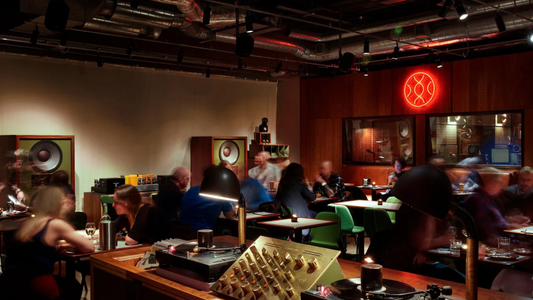
Stillness and Sound: Ojas Listening Room’s Sonic Sanctuary in SoHo
By Rafi Mercer
New Listing
Ojas Listening Room is one of New York City’s most respected listening bars — explore more in our NYC Music Venues guide.
Venue Name: Ojas Listening Room
Address: 62 Crosby Street, New York, NY 10012, United States
Website: devialet.com/en-us/ojas-listening-room
Phone: N/A
Spotify Profile: N/A
Crosby Street has always been a strange seam in SoHo — a little quieter, a little slower, a street that seems to step out of the city’s rhythm without leaving it entirely. Halfway down, there’s a glass-fronted space you might mistake for an art gallery. Inside, there’s no bar, no kitchen, no hum of chatter. Instead, there’s a pair of towering loudspeakers, a turntable, and a small group of people sitting very still. This is Ojas Listening Room.
Devon Turnbull, the mind behind Ojas, is known in equal measure in the audiophile world and the art world. His speaker designs — big, bold, and unashamedly physical — are as much sculpture as they are instruments. The Listening Room is his expression of pure sound as an environment, created in collaboration with high-end audio house Devialet.
The space is deliberately minimal: untreated concrete floor, soft cream walls, a handful of mid-century chairs and low benches arranged in a loose semicircle facing the speakers. No drinks menu, no background hum of refrigeration or espresso steam. The first thing you notice is the silence, and the way it shapes the air before the first note arrives.
When the needle drops, the room changes. You hear not just the instruments, but the space between them. A brushed cymbal blooms and disappears into the corners; a bowed double bass stretches into the floor. The Ojas system doesn’t push the music at you — it draws you into it.
This is not a drop-in space. Most sessions are booked in advance, some public, some private. The audience might be six people, it might be fifteen, but it never feels crowded. Sessions can run from a single album played start-to-finish to a two-hour arc of selections, often from the host’s personal vinyl collection. Genres are wide-ranging — spiritual jazz, 70s singer-songwriter, electronic minimalism — but always chosen for the way they inhabit the system.
There’s an unspoken agreement in the room: phones are away, voices are low, and listening is the point. It’s not pretension; it’s protection. In a city where even high-end cocktail bars can feel like a competition for volume, this is a rare pocket of sonic clarity.
One evening, I heard a first pressing of Alice Coltrane’s Journey in Satchidananda. The harp shimmered like light through water, the bass grounded the room like bedrock, and Pharaoh Sanders’ saxophone arced overhead as though the ceiling itself was a sky. People didn’t clap when the record ended — they exhaled.
Because Ojas sits in SoHo, the clientele often includes art collectors, fashion designers, and musicians. But there’s also the curious passerby who’s read about “that place with the giant speakers” and booked a session without quite knowing what to expect. It’s telling how many of them return.
In its way, Ojas Listening Room is a quiet rebellion. It’s saying that music deserves our full attention, that the physical act of sound moving air is still worth designing a whole space around. The lack of drinks or dining means the entire sensory focus is on the sound and the visual simplicity of the room.
When you leave, Crosby Street feels almost too loud, the city rushing back in. But if you pay attention, you realise your ears have changed. You hear the footfalls on the pavement with more texture, the Doppler curve of a taxi passing, the way two voices overlap in conversation.
Ojas doesn’t just play music — it resets your listening.
Rafi Mercer writes about the spaces where music matters. For more stories from Tracks & Tales, subscribe, or click here to read more.
Explore More: See our Listening Bars collection for venues worldwide.







